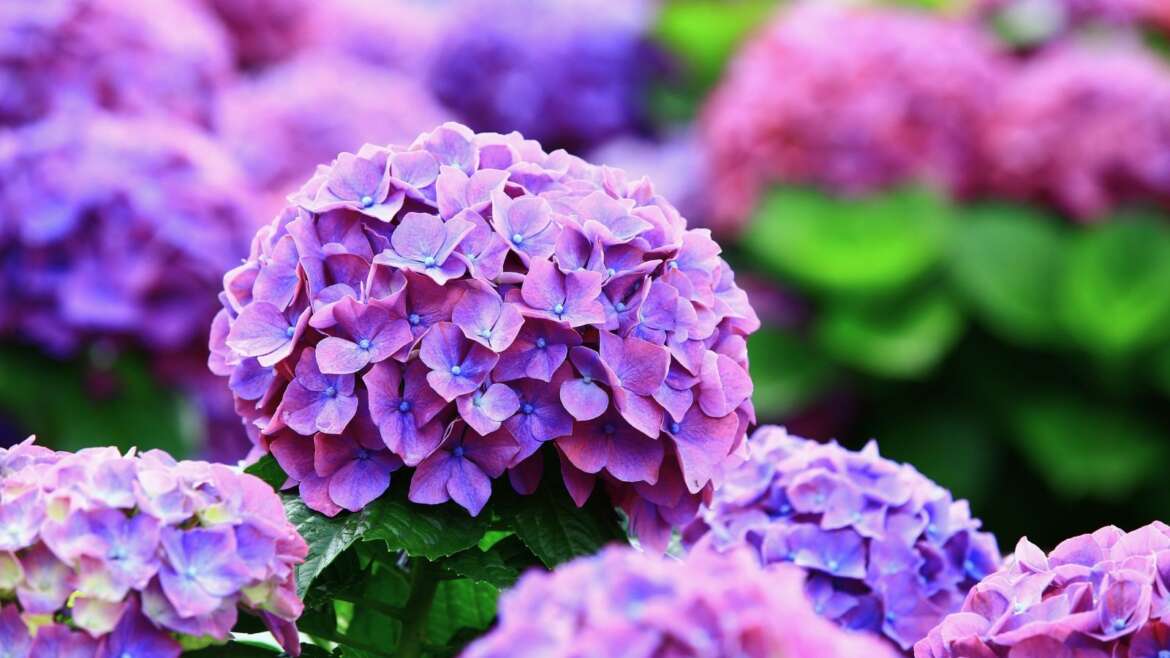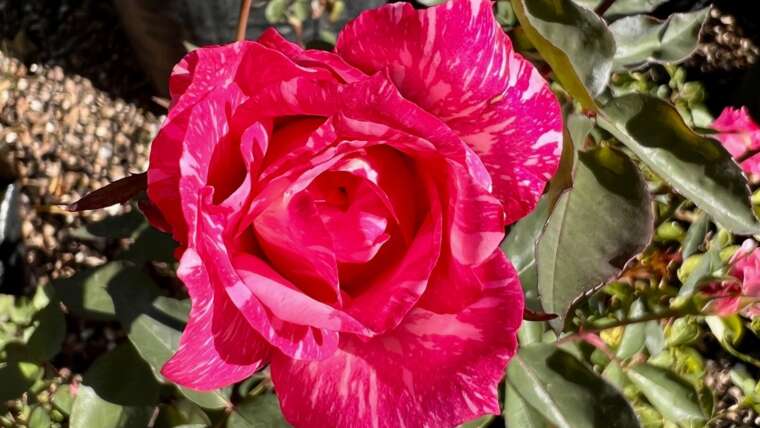There are six main types of hydrangeas, and many of them can be divided. The most common big-leaf hydrangeas, like Hydrangea macrophylla, are easily propagated by division. Follow the steps below to do this. Also, on the list for dividing are oakleaf and smooth hydrangeas.
The panicle, climbing, and mountain types are not good for dividing. Stem cuttings, root cuttings, or layering are best for propagating these. The best time of the year to divide a hydrangea is early spring. You will notice the new green buds start to appear at this time of the year. You can also divide hydrangeas in mid to late fall as an alternative option.
Some container plants purchased from a nursery have several plants in the same container. These can easily be split up and planted separately in the garden. Here are the steps to get the best out of your newly divided hydrangeas.
Materials
When attempting to separate them, use fully matured and healthy plants.
Before tackling this job, you need to gather a few things. If you are planting your divisions into containers, you will need big enough containers for a fully-grown hydrangea plant.
The ideal is a plastic sheet with a large surface area to work on and to see the plant’s roots. You can also use a large bucket or trough. Sharp pruning shears or a knife are needed for vigorous roots.
Do you have all the items needed to prepare the soil so that it has plenty of compost and organic materials and is rich and fertile?
How to Divide Hydrangeas
Choose the right time of the year and the right type of hydrangea before starting. The cooler seasons of spring and fall are best.
Then, it’s just a matter of following the steps to get it right. It’s a very simple process that even a beginner gardener will be able to do. These shrubs are also very good plants to practice dividing on, as they have very forgiving root systems that can handle a bit of mangling.
Step 1: Preparation
 Prepare them by cutting them back first.
Prepare them by cutting them back first.
Before you begin, cut back the plant so that most leaves and flowers are removed, and you have the stems with the green buds if dividing in spring. The sprouting will be a good start to get them going in their new positions. Before digging up any hydrangeas in the garden, prepare the new area with added compost or organic materials to improve the soil.
Make your cuts slightly above the buds so there is 1/4″ of stem just above. If you cut too close to the bud or too far, it could impact the overall health of your plant. Ensure the position for planting your divisions has well-draining, rich soil with plenty of morning sun and afternoon shade.
Water the plants well for several hours before starting the division process. If you are not ready to plant, keep the divisions in a bucket of water to keep them hydrated while you prepare the planting area.
Step 2: Dig Up
 Carefully dig up the plant without pulling on it too harshly.
Carefully dig up the plant without pulling on it too harshly.
Dig up a plant you want to divide using two garden forks placed at opposite ends and carefully positioned to lift the hydrangea from the ground. You always need to do this carefully so as not to damage the plant’s roots, but in the case of hydrangeas, it’s not too worrisome as they will bounce back quickly. Just don’t pull it from the ground by its stems.
Hydrangeas will form baby plants on the sides of the bush. Once they have grown a bit and have a good set of roots, they can be dug up and replanted. Use a spade to separate the baby from the clump, digging into the soil to split it from the mother plant. This will help prevent digging up the whole plant.
Step 3: Shake Off the Roots
 Shake off as much dirt as possible from the roots.
Shake off as much dirt as possible from the roots.
Place the plant on a working plastic sheet or in a large bucket and shake off as much excess soil as you can from the roots. This will enable you to see how to divide the plants so that you get as much of a root system for a new plant as possible. Cut off any damaged, diseased, or rotten roots.
Step 4: Divide
 Pulling apart the stems is necessary before grouping them based on the roots.
Pulling apart the stems is necessary before grouping them based on the roots.
Select a few stems and pull them apart, with their roots attached, with your hands. If this becomes challenging, use a sharp pair of pruning shears or a knife to cut the stem into sections. Group together single stems as long as they have roots or a group of stems for a more instant bushy hydrangea.
Step 5: Replant
 It is possible to replant them directly on the ground or in containers.
It is possible to replant them directly on the ground or in containers.
Replant the divisions into the prepared area. Set them at the same level or even slightly higher than when planted. Backfill the soil around the roots and pack in the soil to reduce air pockets. Water in well and mulch around the base to keep the roots warm.
Step 6: After Care
 Watering them properly is vital to keep the soil moist after the process.
Watering them properly is vital to keep the soil moist after the process.
Water your newly planted shrubs one to two times a week to keep the roots evenly moist. However, do not let the dirt become soggy.
If your soil is well prepared, they will not need extra feeding. But if neighboring plants need fertilizer, avoid nitrogen-rich fertilizers, which will promote these shrubs to grow lots of leaves without flowers. If there is a cold snap, wrap them in burlap or even bubble wrap to keep the plants from getting too cold.




